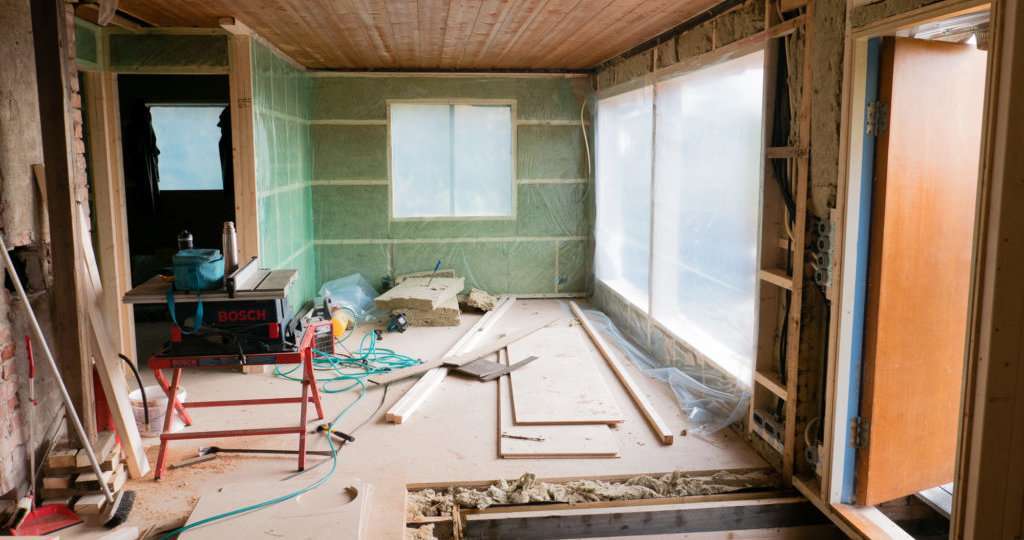Unlock the hidden potential of your property with a smart renovation loan that turns ambitious makeovers into achievable transformations
Understanding Home Renovation Financing: Your Gateway to Property Transformation
In today’s dynamic property market, renovation loans have become an increasingly popular solution for homeowners looking to transform their existing properties into dream homes. With UK house prices continuing to rise – showing a 4.1% increase in 2023 according to the latest ONS data – many property owners are choosing to improve rather than move. Renovation loans offer a structured way to finance home improvements, whether you’re planning a modest update or a complete property overhaul. These financial instruments bridge the gap between your current living space and your aspirations, providing the necessary capital to enhance both your home’s functionality and market value. Understanding the various renovation financing options available in the UK market is crucial for making informed decisions about your property investment.
Types of Renovation Loans: Finding Your Perfect Match
The UK market offers several renovation loan options, each tailored to different needs and circumstances. Let’s explore the main types available:
- RenoFi Loans: These innovative loans allow borrowing up to 90% of your home’s future value, ideal for major renovations
- Home Equity Loans: Borrow against your property’s existing equity with fixed interest rates
- HELOCs (Home Equity Lines of Credit): Flexible credit lines with variable rates for ongoing renovations
- Personal Loans: Unsecured options for smaller projects, typically with higher interest rates
- Cash-out Refinancing: Replace your existing mortgage while accessing additional funds for house renovations
Maximizing Your Renovation Loan: Smart Strategies for Success
To make the most of your renovation loan, it’s essential to understand the key financial metrics and planning strategies. The loan-to-value (LTV) ratio typically ranges from 75% to 90% depending on the lender and loan type. Consider the following aspects when planning your renovation financing:
- Calculate your property’s current value and potential post-renovation worth
- Research current interest rates across different loan types (currently averaging 4.5-7% in the UK)
- Factor in additional costs such as surveys, architectural plans, and contingency funds
- Consider tax implications and potential benefits, including VAT relief on certain improvements
Choosing the Right Renovation Loan for Your Project
Selecting the appropriate renovation loan requires careful consideration of various factors. Start by assessing your project’s scope, timeline, and budget requirements. Consider your current financial situation, including income stability, credit score, and existing debts. Most UK lenders require a minimum credit score of 670 for secured loans and higher for unsecured options. Documentation requirements typically include:
- Proof of income and employment
- Detailed renovation plans and cost estimates
- Property valuation reports
- Existing mortgage statements
- Tax returns for self-employed applicants
Making Your Renovation Dream a Reality: Next Steps
Once you’ve chosen your preferred loan type, it’s time to put your plan into action. Begin by creating a comprehensive renovation schedule that accounts for all phases of the project. Work with reputable contractors who can provide detailed quotes and timelines. Ensure all necessary planning permissions are obtained before commencing work. Modern renovation projects in the UK typically take 3-6 months from planning to completion, depending on scope and complexity.
Expert Tips for a Successful Renovation Loan Experience
To ensure a smooth renovation journey, consider these professional insights:
- Always obtain multiple quotes from contractors and check their credentials thoroughly
- Build in a 10-15% contingency fund for unexpected issues
- Keep detailed records of all expenses and communications
- Consider temporary accommodation costs if necessary
- Regular communication with your lender and contractor is essential
Conclusion: Transform Your Home with Confidence
Renovation loans offer a practical solution for homeowners looking to enhance their properties without the need to relocate. By understanding the various options available and following proper planning procedures, you can successfully transform your current property into your dream home. Remember to thoroughly research your options, carefully select your contractors, and maintain clear communication throughout the project. With the right preparation and financial strategy, your renovation goals are well within reach. Contact your local renovation loan specialist today to explore the best options for your property transformation journey.
FAQ
How much do you need to put down on a renovation loan?
3.5% minimum down payment option. Lower credit score requirements. No income limits.
What is the maximum renovation loan?
Income-based calculation The maximum renovation loan amount is determined by multiplying your monthly income by 6, subject to a maximum cap of $30,000, whichever is lower. This ensures the loan remains affordable based on your earning capacity.
How much can I borrow for my renovation?
The maximum you can borrow including your existing loan is up to 90 per cent of your property value. In a situation where your LVR is likely to go higher than 80 per cent after the loan increase, you might also need to get Lenders Mortgage Insurance.
Is it hard to get approved for a renovation loan?
Review renovation loan requirements That said, lenders typically seek: Good credit score of 670 and above. Some lenders offer loans to borrowers with lower credit scores, but those loans typically come with higher-than-average interest rates and fees.
What is the smartest way to finance a home renovation?
Financing Improvements As a rule, the thriftiest way to finance improvements is to pay cash. If there isn’t enough cash available, you may choose to finance these improvements by going to your bank or other lender and apply for a loan.
Sources
[1] https://www.renofi.com/renovation-loans/what-is-a-home-renovation-loan/
[2] https://www.businessinsider.com/personal-finance/mortgages/what-is-a-home-renovation-loan-guide
[3] https://www.unfcu.org/loans/home-improvement/

